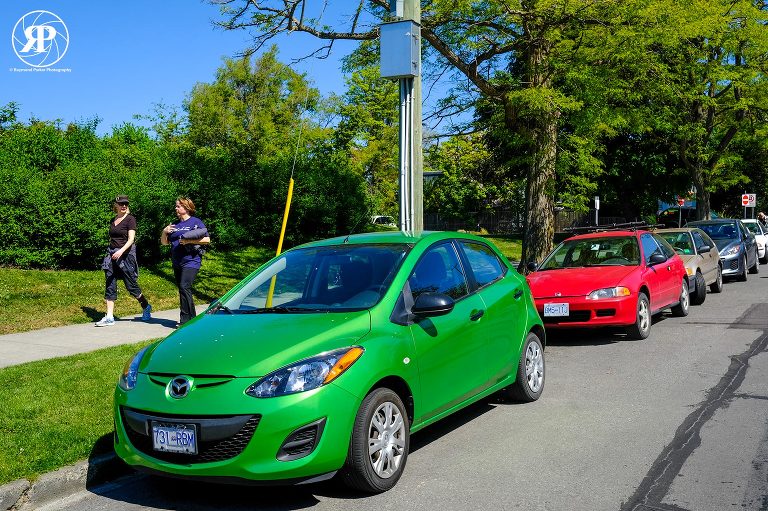The Unboxing
We interrupt this program to bring you news of a new camera on the block.
For quite while now, I’ve been observing the “mirrorless revolution,” if you will. I’ve read the reviews and the encomiums to compact cameras — from Micro Four Thirds to Fuji’s APS-C 16M “X-Trans CMOS” sensor, to Sony’s full-frame offerings. I’ve tried out my buddies’ cameras from the Olympus to the loved/hated Fujifilm X-Pro1. I’ve watched videos until my eyelids droop.
A couple of years back, I bought my wife the Fujifilm X20 — a nice little 2/3″ fixed lens zoom (28-112) camera that introduced me to the “Q menu” and other handy features of the range. You can see some photos made with it here. I borrowed it occasionally.
My first DSLR, purchased in 2003, was the 6MP Fuji FinePix S2. I only recently sold it. It made nice pictures, due to its innovative honeycomb “SuperCCD” sensor, which output to 12MP, considered “huge” at the time. But the auto-focussing was awful. Still, it served me well for a few years as well as helped me recover from a bout with cancer.
Adhering to my aversion to techno-dweebery, I’m not going to detail the thinking that led to my choosing the new Fujifilm X-Pro2 over its competitors, because it really came down to cost, familiarity with Fujifilm products (I loved shooting their transparency films) and some very enthusiastic video and blog endorsements.
Why Mirrorless?
Now the real reasons for my venture into the world of mirrorless cameras.
Like many photographers of my geezer generation, I’m getting tired of lugging a tonne of DSLRs and heavy lenses around. A day in the hills or on a rocky shoreline is exhausting and my bum ankle complains.
The X-Pro2 body costs $1999CA — not a small sum, but it sure beats $3999 for a Nikon D810 or Canon EOS 5D Mark III.
Can compact compete?
But does the Fujifilm X-Pro2 match up to the big guns?
Before I put my money down, I took my 36MP Nikon D800 to Kerrisdale Cameras and shot a series of (jpeg) test shots. I switched between the D800 and X-Pro2 on a tripod, photographing the same subjects.
.jpg)
Nikon D800
.jpg)
Fujifilm X-Pro2
Not exactly a scientific test, but when I took the cards home and examined the results on the screen at 100%, I was hard pressed to see any significant difference. The X-Pro2’s 24-megapixel X-Trans CMOS III sensor is a wonderful thing.
.jpg)
Nikon D800
.jpg)
Fujifilm X-Pro2
People have mentioned the in-camera sharpening Fuji applies to jpegs as excessive. If that is so, it doesn’t offend my eye, and can be dialled down. Colours are saturated.
First impressions
As I said, this is not going to be a comprehensive review (there are plenty out there), but rather a general impression after using the camera for a week.
As with any new camera, it takes a while to find one’s way around. While I’m still getting lost occasionally in the labyrinthian menu, due to my aforementioned familiarity with the “Q” menu, containing often-used functions (which is customizable), I was able to get off to a good start.
The hybrid viewfinder is the first thing to impress. Fuji has packed a wealth of information into its field, including lens crop, focus points (273 are available) and area of focus — a thumbnail electronic viewfinder (EVF) view in the lower right quarter of the viewfinder window. Hence, hybrid. These options are controlled by a scroll button on the back and a lever on the front of the camera, that reminds of the old-school timer on film cameras, and a focus joystick that moves the area of focus. A split focus setting mimics a rangefinder.
Speaking of old-school, Fujifilm’s compact digital cameras certainly pay tribute to their film antecedents. I’ve often had people assume the X-20 is an old Leica or something similar.
Exposure compensation is controlled by a dial on the top right of the body, next to one that sets shutter speed and/or aperture priority mode. Fujinon X-mount lenses have an aperture ring. How novel! And intuitive for those of us who learned on fully manual film cameras.
Incidentally, I chose the Fujinon 23mm f1.4 prime as my entry into the world of these highly-praised lenses. It has not disappointed. I anticipate investing in more … as soon as my budget allows.
One of the big selling-points of the camera for me is the adoption of dual memory card slots, programmable to record as sequential, to back up, or record jpeg and and RAW files simultaneously. I often make use of this feature on my Nikon D800.
Speaking of film cameras, another feature common to Fujifilm cameras and familiar to hoary old film shooters like myself, is the film simulation menu (accessible in the Q Menu) The latest addition to film simulation palette is a new mode based on Fujifilm’s Neopan ACROS black-and-white film. See the gallery below for an example. This joins the classic Astia, Provia and Velvia profiles — Fujichrome reversal films I often used back in the ’90s —and Classic Chrome that mimics desaturated Kodachrome.
To my hand, the ergonomics are superb (see video above for a look).
Cons
There aren’t many, but I concur with other critics that battery life leaves something to be desired. Plan on carrying at least 3 charged batteries on a day-long shoot. The other small quibble that others have mentioned, with which I concur, is the incorporation of the ISO control into the shutter-speed dial. While it copies exactly the function of manual film cameras, in use it is not so practical. Adjustments in the dark are a guessing game and once the main shutter dial is rotated, ISO numbers appear upside-down. It would have been nice to include ISO control in the Q menu.
Finally, after more than a week, I’m still trying to figure out the menu and its association with the hybrid viewfinder. I suspect that sudden “where the hell did that go to … or come from?” moments arise with unintended activation of buttons on the back right side of the camera, next to the grip.
Back to the user manual.
Conclusions
Generally, I’m very pleased with my purchase. The camera has changed my approach to shooting — on the street, especially. It has lightened my load and encouraged me to carry a camera besides the iPhone more often.
It may take a bit longer to get comfortable with the menu and controls, so that the camera “gets out of the way.” But, already, this lightweight tool is encouraging the kind of approach I haven’t explored in years.
Oh, and I haven’t mentioned the WiFi connectivity. The X-Pro2 can talk to your phone, tablet or computer (latter uses PC Autosave). Get the Fuji Camera Remote App and you can use your smartphone or tablet to control the camera remotely or download photos. I’ve used it to post to Instagram in a few moments. How cool is that?
The gallery below showcases some of my real-world testing.


















